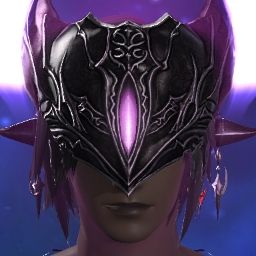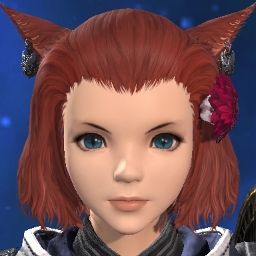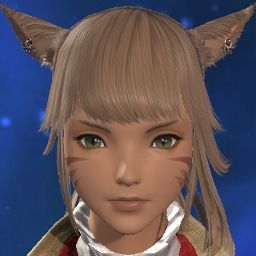Asked about this recently too, hyped to see more people chiming in! I would absolutely love more lore on the Twelve too (just caved and ordered the Eorzea Encyclopedia in case there is more info there haha), but can reply to some of this with stuff I've just noticed floating around.
In my experience, Halone/Ishgard seems to have the most formalized and detailed following. Ul'dah with Nald'Thal is decently solid too, especially if you do thaumaturge/black mage quests. Picking up on exactly how Nald'Thal translates I think involves not just playing certain questlines but also being able to piece together cultural and environmental clues and see how those integrate. It's very present throughout Thanalan but is more understated than Halone is in Coerthas. There are priests and saints, funerary rites and holy sites, and practitioners of black magic are explicitly linked to Nald'Thal, the void, and forms of destruction. Seemingly distinct destruction from Rhalgr though. What hierarchy exists within Ul'dahn clergy (if any, there are faiths irl that lack hierarchies so it wouldn't be crazy to think religion surrounding Nald'Thal could be similar) hasn't been shown yet. But it's interesting that unlike conjurers or even Halonic magic practitioners, thaumaturges actually keep their base in a holy site to Nald alongside priests. There is some religious weight on them.
Meanwhile, Gridania hugely reveres the Elementals in day-to-day practice and has tons of rites surrounding them. They also tie conjury/white magic to the Elementals specifically. However, Nophica as the Matron and a figure who I kind of read as a fertility/harvest goddess in the spirit of Demeter in Greek mythology barely gets brought up. If anything Haedalyn herself seems to have a more prominent role as the Mother in that respect, which strikes me as really odd. I've been interpreting the way Elementals are worshiped/revered in Gridania as culturally similar or parallel to the worship/reverence paid to kami in Othard. Nophica I also figure might be more tied to natural fertility as a kind of mother goddess, whether that references childbirth in animals or humanoids or successful harvests. I've been taking Hydaelyn as a broader and more spiritual than physical creator figure, who represents raw materials and the organization/act of creation rather than the successful, positive externalized result of creation. Might find out that interpretation is off later, but for the time being it's what I'm going with. I'm still really weirded out that Gridanians don't seem to interact with Nophica regardless.
Llymlaen seems super MIA to me and I haven't seen much in the way of worship for her. However, if every time Lominsans reference the ocean/sea/water/etc. it gets taken as synonymous with Llymlaen then I guess as a goddess she's super chaotic and might help or murder everyone on a whim. You might get a good haul of fish, you might get a storm that drowns you and all your crew. Just pray and give tribute and hope for the best. But Llymlaen is referenced specifically as navigation/being able to successfully know where you are going so idek.
I've seen analysis pointing to Sophia as a sort of proto-deity to Nald'Thal and Azemya with imagery of both attached. There is also imagery around Qarn that supposedly points to religious evolution and certain gods being conflated IIRC? I also know that when you finish the Unending Coil of Bahamut, Louisoix is shown surrounded by the Twelve as crystals--setting them apart from primals and linking them to Hydaelyn more closely. I have serious questions on what this implies but can only speculate.
I do think that there might be parallels between the relationship Au Ra (moreso Xaela) have to Azim and Nhaama relative to the Miqo'te with Azemya and Menphina. Imo the forms, stories, and certain connotations differ, but the overall concepts are consistent. I do personally conceptualize Menphina as being more akin to say, Aphrodite, than to being a maternal figure. This isn't to say she couldn't have children theoretically, I mean Aphrodite did in Greek myth, but her main role isn't as a mother goddess. If ties are drawn between Menphina and Nhaama, the big consistency is that both are viewed very much as lunar lovers. Nhaama has the role of being Dusk Mother too, but as a figure there's more to her as well. If Menphina is tied to love and the moon, I personally would interpret her as also being tied to the concept of lunacy as moon madness, to dreams and the unconscious and desire. That's something that comes up a lot in spiritualism, mythology, etc. so doesn't seem like a big stretch. Azim/Azemya (VERY SIMILAR NAMES I AM SO SUSPICIOUS) idk if the deity is a guy, a girl, neither, both, who even knows. But both are the sun and both exist as counterpoints to the disciples of Nhaama/Menphina respectively. Azemya is also seen as the Warden and is written to be charged with receiving confession, which places her in the role of judge in a way. Azim I have been taking in the spirit of the Emperor card in tarot so wouldn't be a stretch to see him holding that function as well--an authority.
Thaliak we know is sacred to Sharlayans, and represents knowledge/exploration. There are iirc symbols and references to both him and the impact he has on culture throughout Idyllshire (particularly in architecture), but because the original residents are gone we don't have as much info as we might have in Ul'dah or Ishgard. Worship of Thaliak does seem to be more present and significant among Sharlayans compared to say, Nophica among Gridanians or Llymlaen among Lominsans.
Rhalgr is definitely present in Ala Mhigo and afaik seems like a kind of Darwinian/Spartan chaos god? Will keep his people protected from forces of nature, but expects them to fight tooth and nail to become the strongest they possibly could be. Fordola IIRC believed that the Garleans in their might were the rightful rulers of Ala Mhigo due to their victory and that only through their own might could the Ala Mhigans prove themselves worthy. It wasn't explicitly stated but I think it's reasonable to say she believes that the Garlean occupation was a test/judgment by Rhalgr. It seems like the people of Ala Mhigo have ranging interpretations of what Rhalgr represents to them, some more benevolent, but all tie him to the idea of power itself.
EDIT: I didn't see some of the other posts in this thread previously and it changes my understanding a bit haha. Especially on Llymlaen and Nophica. Still was fun though so leaving the notes!
-
05-29-2019 11:29 AM #11Player

- Join Date
- Jan 2019
- Location
- Ul'dah
- Posts
- 675
- Character
- Cenric Asher
- World
- Famfrit
- Main Class
- Black Mage Lv 100
(2)Last edited by Jaywalker; 05-29-2019 at 07:16 PM.
-
05-29-2019 11:49 AM #12Player

- Join Date
- Jan 2019
- Location
- Ul'dah
- Posts
- 902
- Character
- Jakaar Rakkin
- World
- Kujata
- Main Class
- Paladin Lv 90
Just would like to point out that it is Menphina who is the moon goddess and patron of the moon keeper miqo'tes.
Nymeia is a goddess of fate, as well as the goddess whom Theodoric, the Mad King of Ala Mhigo, claimed he was chosen by when he outlawed the Fist of Rhalgr.(2)
-
05-29-2019 01:08 PM #13
-
05-29-2019 07:01 PM #14Player

- Join Date
- Dec 2012
- Location
- Ala Mhigo
- Posts
- 8,252
- Character
- Enkidoh Roux
- World
- Balmung
- Main Class
- Paladin Lv 90
Actually, besides the Ishgardian Orthodox Church of Halone, there are other examples of organized clergy for other members of the Twelve - the Church of Nald'thal in Ul'dah being the most obvious (even though the church worships Nald'thal's dual aspects as seperate deities which players may know as the Arrzaneth Ossuary (aka the THM's Guild) and the Milvaneth Sacrarium, and there is also a smaller church of Nald'thal dedicated to Saint Adama Landama, plus even smaller shrines still found near Highbridge and Forgotten Springs).
And speaking of Camp Drybone a roegadyn priest of Azeyma can also be found there, sermonizing anyone who will listen (before the Calamity he was in Gridania for some reason, but post Calamity is in Thanalan still trying to convert anyone who will listen to the Warden).
Apart from that, worship of the other members of the Twelve seems to be less regimented (it's unclear how much worship of Nophica fits into Gridania's magocracy, but 1.0 seemed to suggest that the elementals were closely tied in with Her (a 1.0 Gridanian main story quest outright had a moogle declaring that the elementals had annointed "those beckoned by the wood" (Real!Yda and Papalymo) as "messengers of Nophica", which even took E Sumi-Yan by surprise), so the Gridanians' reverence towards the elementals could sort of be thought of as revering Nophica by extension (lets not forget also that the Order of the Twin Adder outright used Nophica in their recruitment posters).(5)
-
05-29-2019 07:31 PM #15
-
06-01-2019 07:52 PM #16Player

- Join Date
- Mar 2011
- Location
- Ul'dah
- Posts
- 3,074
- Character
- Rannie Lfey
- World
- Faerie
- Main Class
- Red Mage Lv 100
One other thing to be pointed out is after the keeper of the lake quest Minfillia is told about the covenant between midgard and hydaelyn, however the tale they are used to is between midgard and one of the goddesses... I cant remember off the top of my head. (At work so cant play the scene) So the point of what I'm saying is... how much of the 12 is honestly even real. When Louisouix invoked the 12 to contain Bahamut he didnt get them, he got their symbols. So are they even real or is some of the stories, what little of them they may be, have just been changed and is actually Hydaelyn.
(0)
-
06-02-2019 04:44 AM #17Player

- Join Date
- Aug 2013
- Location
- Terncliff
- Posts
- 206
- Character
- Talia Rai
- World
- Diabolos
- Main Class
- Gunbreaker Lv 90
I would really like more ingame reference to Nymeia myself. I feel like she's likely based on a combination of all 3 Fates from Greek Mythology since she's tied to fortune and weaving, but it would be cool if that meant she also had 3 separate personifications as a result. I'd also like to see Gold Saucer npcs reference her sometimes since she's usually the chosen patron of gamblers. That's the reason my character chose her as a patron, no time to worship anything but good luck. Doesn't help improve my dice rolls ever though >_>
(0)
-
06-02-2019 05:22 AM #18Player

- Join Date
- Jan 2019
- Location
- Ul'dah
- Posts
- 675
- Character
- Cenric Asher
- World
- Famfrit
- Main Class
- Black Mage Lv 100
Got Encyclopedia Eorzea, there's a ton of other info in there including creation myths and afterlife concepts (among other things). I might be able to paraphrase some of it into here, just want to avoid direct copying to respect the creators of the encyclopedia.
(0)
-
06-03-2019 09:12 PM #19
Compiling lore on the Twelve has actually been a long-term project for me! But I usually only put together posts when there's a demand for them. So far I've done 10 out of the 12, with Halone and Llymlaen (my matron deity) still to go! Hopefully I'll get to those at some point! But here's sharing what I've put together about the Twelve so far!
- Menphina, the Lover
- Thaliak, the Scholar
- Nymeia, the Spinner
- Oschon, the Wanderer
- Byregot, the Builder
- Rhalgr, the Destroyer
- Azeyma, the Warden
- Nald'thal, the Traders
- Nophica, the Matron
- Althyk, the Keeper
(At some point I'd like to go back and add in all the new info about the Saints blessed by the Twelve into each post like I've done for Nald'thal. Eventually that will happen!)
Hope this helps, OP!(9)
-
06-04-2019 04:44 AM #20Player

- Join Date
- Oct 2017
- Posts
- 1,018
- Character
- Kharagal Mierqid
- World
- Cerberus
- Main Class
- Summoner Lv 90
I made a tumblr post of all the saints, the virtues associated with them and the basic outlines of their stories.
https://0bsidian5ire.tumblr.com/post...al-fantasy-xiv
It is rather funny how many of the saints' stories and virtues have very little to do with the god(dess) they are associated with.(6)



 Reply With Quote
Reply With Quote








